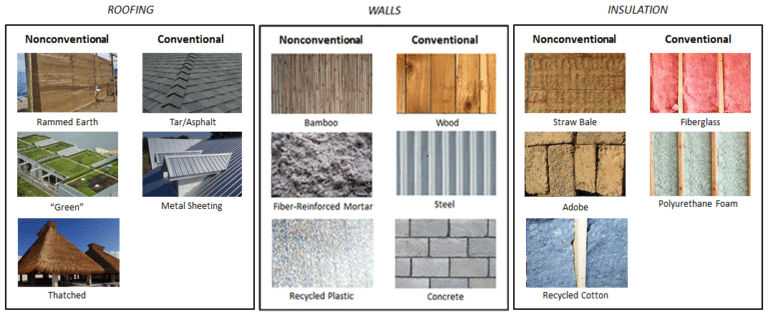How Does Architecture Promote The Use Of Sustainable Construction Materials In Affordable Housing?

Building a home or any other structure is a significant undertaking that requires a lot of resources and can have a significant impact on the environment. Traditional building methods often use materials that are not environmentally friendly, such as cement, which releases a lot of carbon dioxide during production. However, sustainable building practices are changing the way we look at construction. By adopting sustainable building practices, we can reduce our impact on the environment while still building architecturally beautiful and functional structures.
What is sustainable building?
Sustainable building, also known as green building, is an approach to building that takes into account a building's environmental impact and the health of the people who occupy it. Sustainable building practices aim to reduce waste, increase energy efficiency, and use materials that have minimal environmental impact. Sustainable building practices also focus on creating a healthy indoor environment by using materials that are free of harmful chemicals and promoting good indoor air quality.
Why is sustainable building important?
Sustainable building is essential for a healthy planet and a healthy population. By adopting sustainable building practices, we can reduce our impact on the environment, which includes reducing carbon emissions, reducing waste, and conserving resources. Sustainable building practices also promote a healthy indoor environment, which can improve the health and well-being of the people who occupy the building. In the long run, sustainable building practices can also save money by reducing energy costs and minimizing the need for repairs and renovations.
What are some sustainable building practices?
There are several sustainable building practices that can be adopted to reduce environmental impact and promote a healthy indoor environment. Some of these practices include:
1. Using sustainable building materials
Using sustainable building materials can significantly reduce a building's environmental impact. Sustainable building materials include materials that are renewable, recyclable, or biodegradable. Examples of sustainable building materials include bamboo, cork, and recycled steel. Sustainable building materials can also be used in building insulation and finishing materials.
2. Designing for energy efficiency
Designing a building for energy efficiency can significantly reduce energy consumption and associated carbon emissions. Building orientation, natural lighting, and insulation are all critical considerations when designing a building for energy efficiency. Installing solar panels or using other renewable energy sources can further enhance a building's energy efficiency.
3. Reducing water usage
Reducing water usage is an essential aspect of sustainable building practices. Low-flow fixtures, dual flush toilets, and water-conserving landscaping are all effective ways to reduce water usage in a building.
4. Promoting good indoor air quality
The quality of indoor air is critical for the health and well-being of a building's occupants. Using low-VOC (volatile organic compound) paints and avoiding materials that contain formaldehyde and other harmful chemicals can promote good indoor air quality. Proper ventilation and air filtration systems are also essential for maintaining good indoor air quality.
5. Minimizing waste
Minimizing waste is another critical aspect of sustainable building practices. Construction waste can be minimized by using prefabricated building materials or by carefully planning material usage to reduce waste. Recycling and composting can also help reduce the amount of waste generated during construction.
6. Using renewable energy sources
Using renewable energy sources, such as solar and wind power, can significantly reduce a building's environmental impact. By generating energy on-site, a building can become less reliant on non-renewable energy sources and reduce associated carbon emissions. Renewable energy sources can also provide financial benefits by reducing energy costs over time.
How can I build sustainably?
Building sustainably requires careful consideration of the materials and methods used during construction. To build sustainably, you should:
1. Choose sustainable building materials
Choose sustainable building materials that are renewable, recyclable, or biodegradable. Research the environmental impact of the materials you plan to use and choose materials that have minimal environmental impact.
2. Work with a sustainable building professional
Work with a building professional who has experience in sustainable building practices. They can help you design a building that is energy-efficient, promotes good indoor air quality, and reduces waste.
3. Design for energy efficiency
Design your building for energy efficiency by considering building orientation, natural lighting, and insulation. Use renewable energy sources, such as solar and wind power, to further enhance your building's energy efficiency.
4. Minimize waste
Minimize waste by carefully planning material usage and recycling and composting waste generated during construction.
5. Use low-VOC paints and avoid harmful chemicals
Use low-VOC paints and avoid materials that contain formaldehyde and other harmful chemicals to promote good indoor air quality.
6. Reduce water usage
Reduce water usage by using low-flow fixtures, dual flush toilets, and water-conserving landscaping.
What are the benefits of sustainable building?
There are several benefits to sustainable building practices, including:
1. Reduced environmental impact
Sustainable building practices can significantly reduce a building's environmental impact, including reducing carbon emissions, conserving resources, and minimizing waste.
2. Improved indoor air quality
Sustainable building practices can promote good indoor air quality, which can improve the health and well-being of a building's occupants.
3. Increased energy efficiency
Sustainable building practices can increase a building's energy efficiency, which can reduce energy costs and associated carbon emissions.
4. Savings on maintenance and repairs
Sustainable building practices can reduce the need for repairs and maintenance, which can save money over time.
Conclusion
Building sustainably is essential for reducing our environmental impact and promoting a healthy planet and healthy population. By adopting sustainable building practices, we can reduce waste, conserve resources, and improve indoor air quality while still building architecturally beautiful and functional structures.




Post a Comment for "How Does Architecture Promote The Use Of Sustainable Construction Materials In Affordable Housing?"